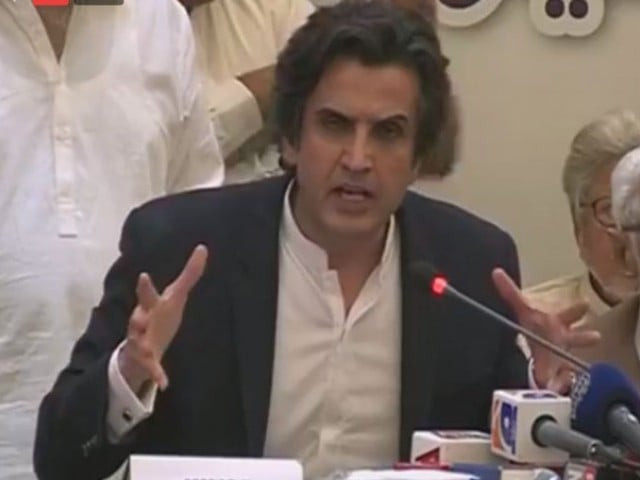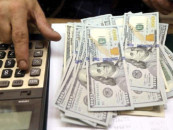Govt plans to shield vulnerable segments from inflation
Acknowledges economy is facing deep-rooted structural problems

Acknowledges economy is facing deep-rooted structural problems PHOTO: FILE
Addressing the 34th annual general meeting and conference of the Pakistan Society of Development Economists (PSDE), the minister highlighted that the government wanted to compensate the masses through the provision of social protection.
He regretted that the present government had inherited a fragile economy and underlined the challenges including the declining foreign exchange reserves, wide fiscal and current account deficits, rising inflation and increasing foreign and domestic debts.
CPEC size to stay at $50 billion for now
"The Pakistan Peoples Party (PPP) government had inherited an inflation rate of 14.1% in March 2008 and took it to 21.5% in first 100 days, increasing it by 7.4 percentage points," he recalled. "On the other hand, the Pakistan Muslim League-Nawaz (PML-N) government inherited 5.1% inflation in May 2013 and raised it to 8.5% in first 100 days, an increment of 3.4%."
The current Pakistan Tehreek-e-Insaf (PTI) administration, he highlighted, inherited an inflation rate of 5.8% and after 100 days it rose to 6.5% in November 2018, an increase of merely 0.7%.
"The drivers of inflation in all the eras were the depreciation of rupee and upward revision in utility prices," he pointed out.
Bakhtiar was of the view that the national economy was facing deep-rooted structural problems as economic growth was normally factor-driven and consumption was boosted artificially to lift the growth rate.
CPEC to remain exclusive between 'all-weather-friends'
"The quantum of consumption in the country is 93% of GDP (gross domestic product), which is the highest among emerging economies, whereas investment and savings rates are one of the lowest," he said.
The consumption ratio in India was 70% and in Bangladesh it was 74% whereas the investment ratio in the two countries was over 30%. In Pakistan, the investment ratio was just 16%, he said.
In the case of savings, "the ratio in Pakistan is less than half the rations in these countries".
He emphasised that the growth strategy of the government focused on strengthening the economic fundamentals like quality and inclusiveness of economic growth or human capital and enhancing technological capability.
Bakhtiar called for diverting focus to small and medium enterprises (SMEs) as they had massive potential to absorb skilled and semi-skilled youth. "The government will provide incentives for exploiting the SMEs in order to create more job opportunities for the youth," he said.



















COMMENTS
Comments are moderated and generally will be posted if they are on-topic and not abusive.
For more information, please see our Comments FAQ